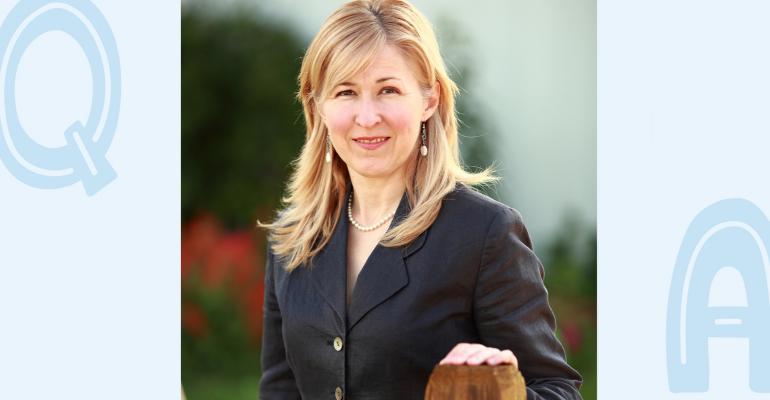Sarah Galbraith Laucks, CMP, is a former event planner with 25 years of expertise running meetings for people with disabilities, inclusive events, and educational programming. She contributed guidance for meeting planners to the ADA Checklist. Galbraith Laucks is now principal at SarahGalbraithLaucks.com consultancy.
What do you look for when choosing a venue?
Galbraith Laucks: Physical access has to be built in; you can’t add it later. A venue with a lot of stairs should make you stop and think. There are people who may not be in wheelchairs but have mobility issues such as diabetic amputees, people with obesity, or someone who simply sprained an ankle.
Don’t rely on the Americans with Disabilities Act for compliance; facilities have often gotten it wrong, sadly. In one well-known meeting hotel, the bathrooms were nicely accessible, but they were up a flight of stairs a long way from elevators. We had to take over a guest room near the meeting space to use instead. When facilities retrofit to accommodate people, they miss obvious things; it’s best to do a walkthrough with a member of the local disability community. Search the web for “independent living center” to find a local organization and get advice on transport and locations for your event.
A good blogger to follow is John Morris at WheelchairTravel.org, and sift through some TripAdvisor reviews on your venue and destination. The disabled community is often vocal about shortcomings.
What gaps do you see at events?
Galbraith Laucks: If you include simultaneous translation, don’t forget American Sign Language. The deaf community sees itself as a distinct culture and, although they are adept at interacting with the hearing community, ASL conveys nuances lost in other translations. I spend the money for Communications Access Realtime Translation because it helps anyone with hearing loss, people who are bilingual but may not catch everything the speaker is saying, and even English speakers who might not understand strong accents. We put up a big screen behind the speaker and use CART providers—court reporters with additional training—who type the speaker’s comments in real time. They typically charge over $100 an hour so I usually hire them for general sessions but not for workshops.
What’s your best advice for designing events?
Galbraith Laucks: Know your attendees! I noticed that a lot of attendees had trouble reading brochures printed on glossy paper because they wear bifocals, which are not great with reflective material. Now I only use nonglossy paper. Design your schedule so that attendees don’t have to sprint from one place to another. It’s a big-picture thing. We must stop jam-packing schedules—not just for Boomers with knee and hip replacements; anyone can have a temporary mobility issue. Have a diversity and inclusion policy for your speakers and panels. Damon Brooks Associates is a good resource for speakers with disabilities. I used Josh Blue, a comedian with cerebral palsy, and his interactions with the captioner and sign-language interpreter became part of the show. The audience loved it!
What other trends should planners be looking at?
Galbraith Laucks: F&B trends are increasingly important. Peanut allergies are taken seriously, but celiac disease and other dietary issues should be treated the same way. I suggest planners use a double-ticket system for meals: The attendee is given a packet of color-coded tickets at registration and physically gives one to the server who brings the meal with a matching ticket. This cuts down on mistakes and people simply skipping meals.






